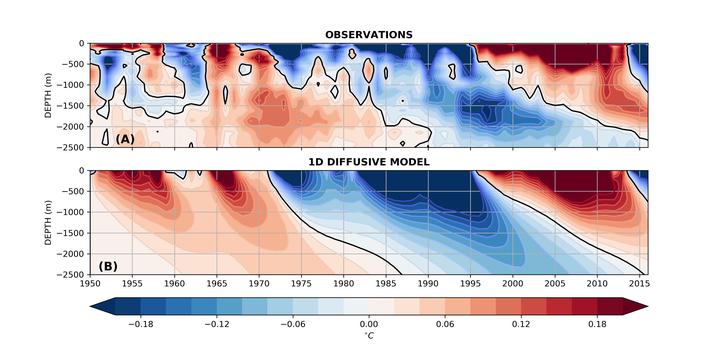Importance of boundary processes for heat uptake in the Subpolar North Atlantic

Abstract
The decadal to multidecadal temperature variability of the intermediate (700–2,000 m) North Atlantic Subpolar Gyre (SPG) significantly imprints the global pattern of ocean heat uptake. Here, the origins and dominant pathways of this variability are investigated with an ocean analysis product (EN4), an ocean state estimate (ECCOv4), and idealized modeling approaches. Sustained increases and decreases of intermediate temperature in the SPG correlate with long‐lasting warm and cold states of the upper ocean with the largest anomalous vertical heat exchanges confined to the vicinity of continental boundaries and strong ocean currents. In particular, vertical diffusive processes along the boundaries of the Labrador, Irminger, and Newfoundland basins are important drivers of the recent intermediate depth warming trend observed during 1996–2014. The overall effect of those processes is captured by a one‐dimensional diffusive model with appropriate boundary‐like parametrization and demonstrated through the boundary‐focused downward propagation of a passive tracer in a 3‐D numerical simulation. Our results imply that the slow and quasi‐periodic ventilation of intermediate thermohaline properties and associated heat uptake in the SPG are not strictly driven by convection‐restratification events in the open seas but also receives a key contribution from boundary sinking and mixing. Increased skill for modeling and predicting intermediate‐depth ocean properties in the North Atlantic will hence require the appropriate representation of surface‐deep dynamical connections within the boundary currents encircling Greenland and Newfoundland.